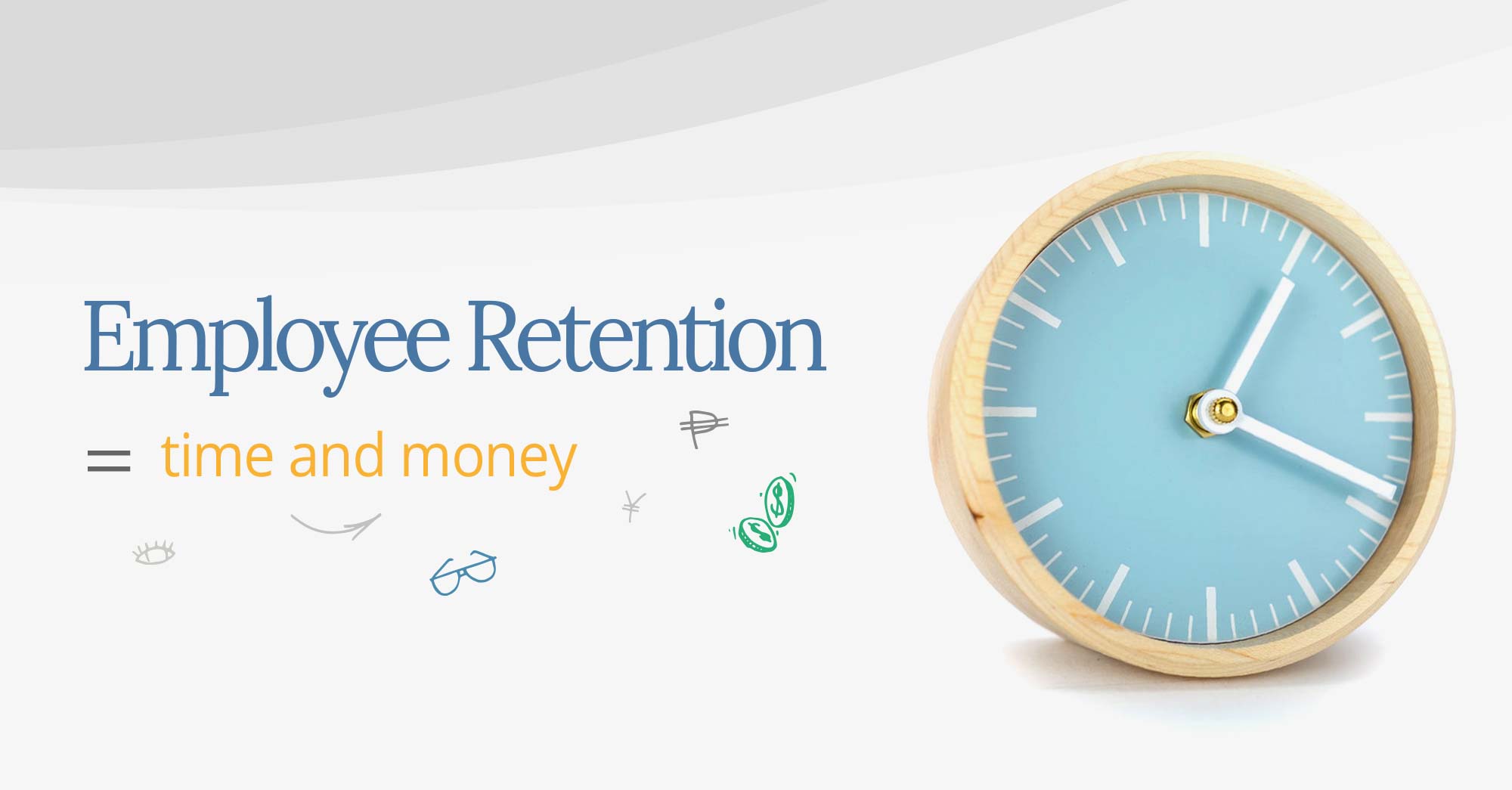Did you know that losing a key member of staff can end up costing a company more than double its salary and that it can take as long as two years for productivity levels to recover?
Having a high rate of employee turnover is bad for business on so many levels: not only will the balance sheet suffer, so too can morale, output, engagement, and, as a result, the overall profitability of a company.
Hiring the right people to move the business to the next level is always high on the agenda – but keeping them should also take priority.
Here are our tips for creating an employee retention plan that will help you hold onto your star employees for the long haul.
1. Start from the ground up
Your acquisition strategy should always incorporate a retention plan. Spending time, money, and manpower on attracting talent to your company is all well and good – but do you have a plan for keeping them?
Recruitment can be an expensive process so it’s key to attract the right people from the start. During the hiring process, check that your candidates not only have the right skill set and experience but that their attitude and expectations align with your organization’s.
Don’t make promises you can’t keep and don’t be vague about a prospective client’s expectations or role. Hiring someone on a promise when the reality of their job is very different can leave them feeling deflated and wanting to leave.
2. Onboarding
Start as you mean to go on.
First impressions count and how new hires settle into a place of work will hugely depend on their first days and weeks at your organization.
Many businesses start new hires on a Friday because other employees are generally in a better mood, more relaxed and there’s a much better office atmosphere than on Monday mornings.
It’s important to make a new employee feel welcome. Don’t just bring them in and sit them at their desk alone. Introduce them to colleagues and set up a buddy system to have a go-to person for any questions.
It’s the simple things like where’s the bathroom and how do you use the coffee machine. Help them feel at home. And always take new starters for lunch on their first day.
Obviously, you’ll have to deal with formalities such as paperwork or introducing them company policies handbooks, but don’t neglect the social end.
3. Money talks
Although it is not the only consideration for staying in a job, at the end of the day, people work to earn money to pay their bills and have a good standard of living.
Offering a competitive salary package is key to attracting and keeping key talent and making them feel rewarded for what they do.
People expect salary reviews and prospects and knowing that the possibility of a pay rise is around the corner. It also helps with motivation levels.
Keep an open dialogue and have set KPIs. Have regular performance appraisals. A quarterly review or even monthly progress meetings might seem excessive, but it keeps an employee’s mind focused on key goals – both for themselves and for the company.
4. Benefits
Having meaningful benefits that employees need and want and that make a difference to their lives will greatly help employee retention levels.
Although free lunches or pizza and beer may be a bragworthy perk with a novelty factor, they’re unlikely to keep someone in their job if they’re considering leaving.
Health insurance, maternity and paternity packages, a good retirement plan, performance bonuses, and flexibility are key sweeteners and meaningfully impact employees.
An ESOP or employee stock plan is also hugely beneficial in attracting and keeping staff. With a vested interest in the company, ownership, and a say in how the organization is run, it has a hugely positive impact on retention rates. You can even outsource the management of employee stock plans so that it’s not an extra burden on your internal resources.
5. Communication
Communication goes both ways – performance appraisals and reviews give you the chance to not only ensure that employees are performing to the expected level, but also allows them to speak to you about any issues they’re having.
Are you providing everything they need for them to be able to do their job properly? Are the correct systems in place? Are they being listened to?
Listening to an employee and ensuring they are respected and have the capacity and tools to do their job properly prevents tension, resentment, and exasperation. It leads to employee satisfaction and satisfied employees are less likely to leave.
6. Investment
Are you investing in your employees and helping them grow? Do they have prospects whilst working for your company?
Offering employees the opportunity to better themselves with further education and training shows that you care for their personal development and not just what they can do for your organization.
Consider introducing things like paid study leave or paying for classes that will further their expertise. It will be beneficial for the business in the long run.
Finally, if one of your star employees does give you notice, it may still not be too late to get them to stay. Sit down with them. Talk to them about why they’re leaving and see if there’s anything that you can do to change their minds. It could be something simple such as a salary increase.
Don’t forget, it will cost you double their salary to hire and train a replacement, and for that replacement to reach the same productivity levels it usually takes two years. A salary increase could cost you less. Maybe money isn’t the reason they’re leaving but talk to them and find out. You might just be able to fix it.
Global Shares is an employee equity management company. Our team has grown by more than 300 per cent over the past three years, to more than 250 staff in 11 offices across the globe. We specialize in helping companies attract, retain and engage top talent.
Talk to us today about setting up a simple way to manage your employee stock plans. We’d love to help you grow alongside us.
This publication contains general information only and J.P. Morgan Workplace Solutions is not, through this article, issuing any advice, be it legal, financial, tax-related, business-related, professional or other. J.P. Morgan Workplace Solutions’ Insights is not a substitute for professional advice and should not be used as such. J.P. Morgan Workplace Solutions does not assume any liability for reliance on the information provided herein.



